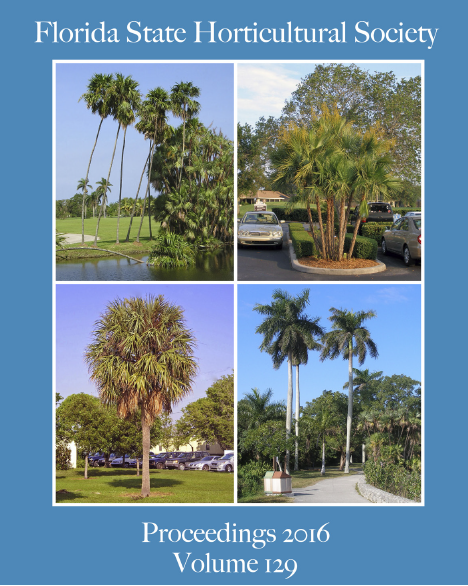Optimization of Growth-stage Specific Nitrogen Fertilization Improves Strawberry Growth and Yield
Abstract
The current commercial practice for nitrogen (N) fertilization by strawberry growers in Florida is to start with 1.75–2 lb/acre/day of N during transplant establishment and lower to 0.75–1.25 lb/acre/day of N for the rest of the season, whereas the university recommendation is to gradually increase from 0.3 to 0.75 lb/acre/day of N, based on crop requirements. The main objective of this study was to determine optimal N fertilization rates during the early season for two major strawberry cultivars, ‘Florida Radiance’ and ‘Florida127’. Five N rates of 0.2, 0.6, 1.0, 1.4, and 1.8 lb/acre/day of N were evaluated starting 22 Oct. and ending 14 Dec. 2014. Thereafter all treatments were fertilized at 1.0 lb/acre/day of N until the end of the season. The increase in N treatments during the early season resulted in increased leaf area and canopy size. This enhanced canopy growth increased marketable yield not only during early season (November and December) but also during the mid (January) and late (February) seasons. ‘Florida Radiance’ had the highest total marketable yield at 1.4 lb lb/acre/day of N, whereas the yield of ‘Florida 127’ peaked at 1.0 lb/acre/day of N. There was no effect of early season N rates on total non-marketable yield. In terms of fruit quality, there was no impact of increased rates on ‘Florida 127’, but it slightly decreased the °Brix value of ‘Florida Radiance’. These results suggest that increasing the early season N rate up to 1.4 lb/acre/d is effective in maximizing strawberry yield during the entire season with minimal impact on fruit quality. Differential varietal responses should be taken into account to further improve the efficiency of N fertilization.

